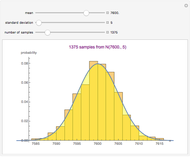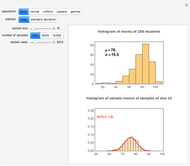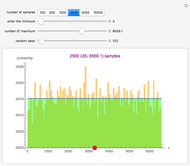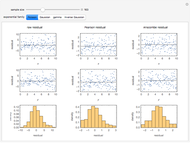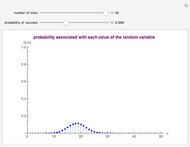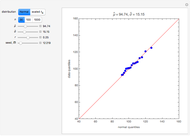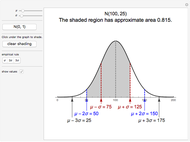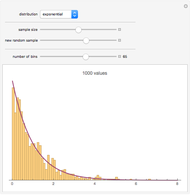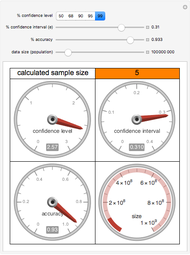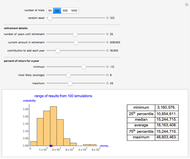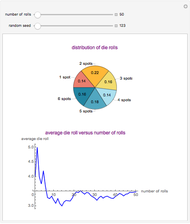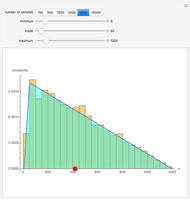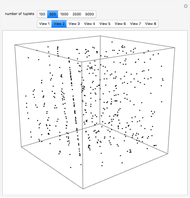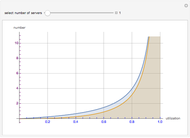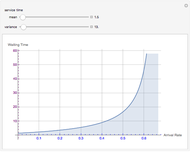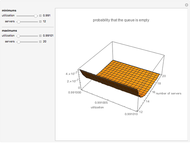Impact of Sample Size on Approximating the Triangular Distribution

Requires a Wolfram Notebook System
Interact on desktop, mobile and cloud with the free Wolfram Player or other Wolfram Language products.
You can select the minimum, mode, and maximum parameter values for the triangular distribution. By definition, the minimum < mode < maximum. The sample probability distribution is compared to the theoretical distribution as you increase the sample size. In general, as the sample size increases, the more closely the sample distribution matches the theoretical distribution. The red dot shows the mean value for the theoretical distribution.
Contributed by: Paul Savory (University of Nebraska-Lincoln) (March 2011)
Open content licensed under CC BY-NC-SA
Snapshots
Details
The triangular distribution is used in discrete-event and Monte Carlo simulation as a key probability distribution for modeling randomness. This Demonstration compares the sample triangular probability distribution with the theoretical distribution. Probability and statistical theory shows us that as the number of samples increases for the given parameter values, the more closely the sample probability distribution will resemble the theoretical distribution. You can verify this by specifying the minimum, mode, and maximum parameter values that describe a sample triangular probability distribution. The specified number of samples is randomly generated and compared to the theoretical distribution.






